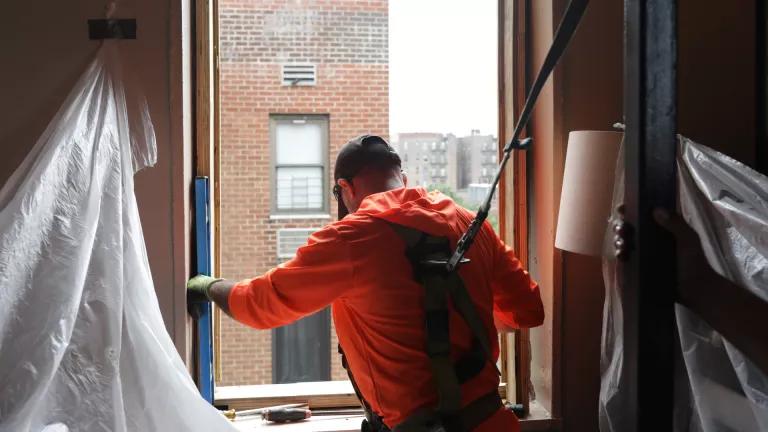A Chance to Coordinate on Offshore Wind
Offshore wind energy is essential for transitioning the grid to a clean energy future. Recognizing this reality, coastal states such as New York and New Jersey are working to add more offshore wind to their energy mix but have not yet examined how working together could minimize consumer costs and increase the grid’s resiliency and reliability.

Offshore wind energy is essential for transitioning the grid to a clean energy future. Recognizing this reality, coastal states such as New York and New Jersey are working to add more offshore wind to their energy mix. However, despite being right next to each other, the two states have not yet examined how working together to bring this clean power onshore could minimize consumer costs and increase the grid’s resiliency and reliability.
This is important primarily because of the way our electric grid operates. The grid is divided into different regions which are regulated by regional transmission organizations, or RTOs. New York and New Jersey are in two different RTOs: NYISO and PJM, respectively. For the most part, these regional grids operate independently from each other. We can enhance the reliability and resiliency of the grid by building transmission connecting them together. In other words, we need more interregional transmission. This will help move energy to where it is needed so we can make sure the lights stay on and that our grid is better equipped to handle the impacts of climate change that are already occurring. However, before we build this interregional transmission, we need to better understand the benefits and costs of doing so to ensure that we can optimize our approach.
Recognizing the potential benefits of interregional transmission, NRDC, along with several clean energy partners, requested that an interregional planning committee for NYISO, PJM and ISO-NE (the grid operator in New England) conduct a study of the potential benefits and costs of an interregional offshore wind transmission project that would connect NYISO and PJM. Last week, we presented our request to this interregional planning committee and urged it to begin this study as soon as possible.
Such a study is important now given that both states have ambitious offshore wind goals: New York has a goal to add 9,000 megawatts (MW) of offshore wind by 2035, and New Jersey has a goal to add 7,500 MW of offshore wind by 2035. Moreover, both NYISO and PJM are currently considering separate offshore wind transmission projects to bring this clean power onshore. Given that these projects will be developed in a part of the New York Bight lease area serving both states, interregional transmission connecting these projects makes a lot of sense. But without a study that looks closely at the costs and benefits, it is not clear whether this approach should move forward.
Moreover, because states on the East Coast have collectively announced offshore wind targets of more than 37 gigawatts (GW) by 2035 and the Biden Administration announced goals of 30 GW of offshore wind by 2020 and 100 GW of offshore wind by 2050, we also requested that this interregional planning committee study the benefits and costs of an interregional offshore high-voltage direct current (HVDC) network from Massachusetts to North Carolina, which would connect the electric systems between different states on the East Coast and offshore wind lease areas. An interregional network that connects the entire East Coast could address fuel security issues, reduce generation needs, boost resilience, and lead to significant savings compared to more local or regional options. A study could examine how to best implement such a network, including how to do so in a cost-effective manner. But you don’t need to take our word for it. Two weeks ago, the Department of Energy released a report that said “comprehensive interregional studies of possible offshore wind transmission options are needed.” This truly is a no brainer.
States should seize this moment to explore the potential of interregional solutions that support their offshore wind goals. A decision by this committee to not study the benefits and costs of an interregional transmission network at this time would be a huge missed opportunity. If such a study is done sometime in the future, New York and New Jersey (and other coastal states) will likely have moved forward with building transmission, making an interregional solution largely irrelevant. We hope the committee agrees with us, and we stand ready to assist in making this study a reality.


